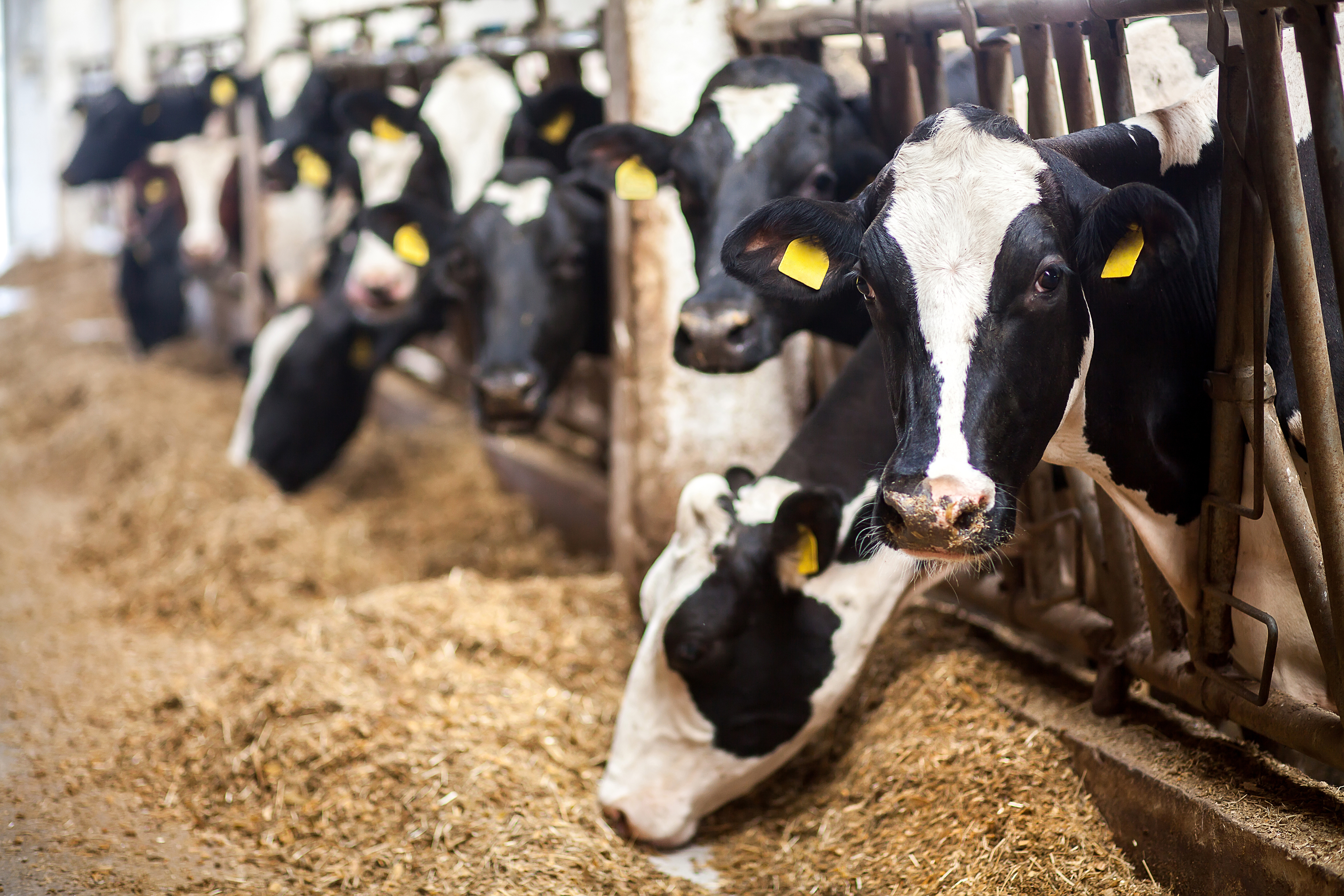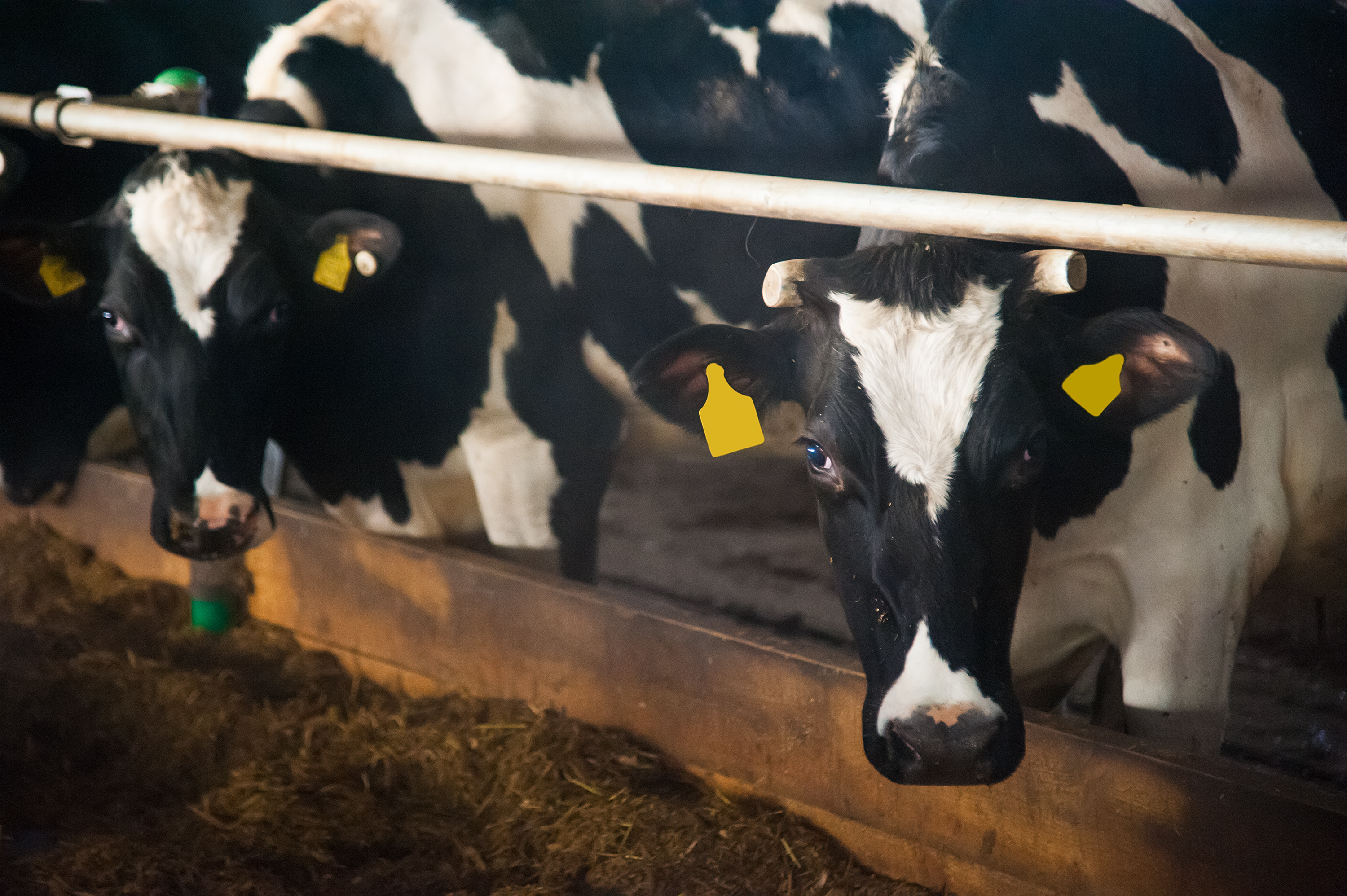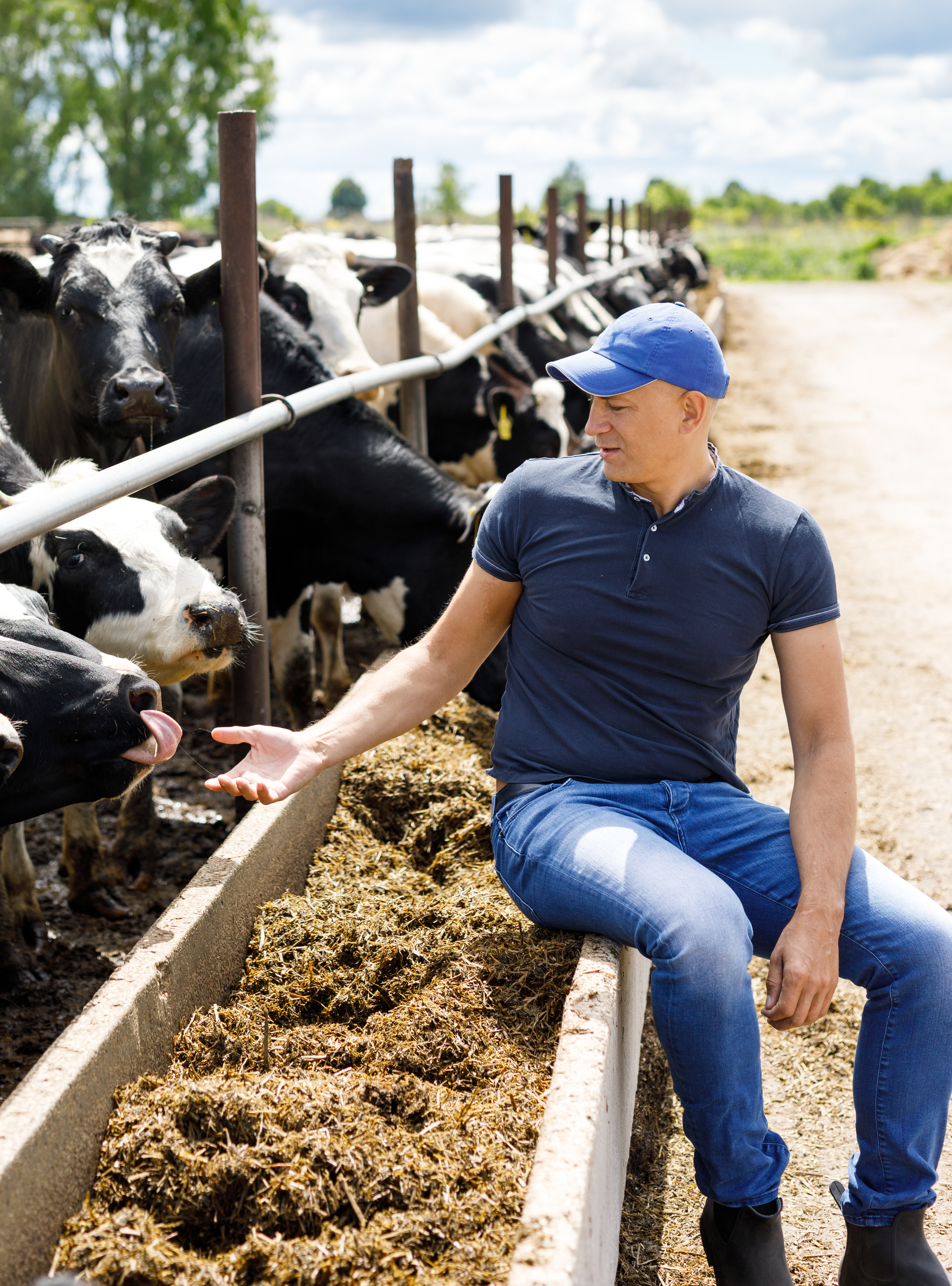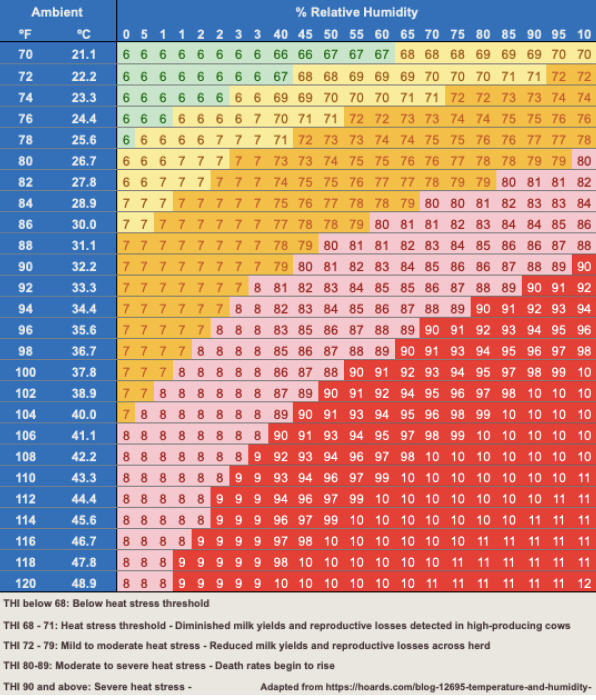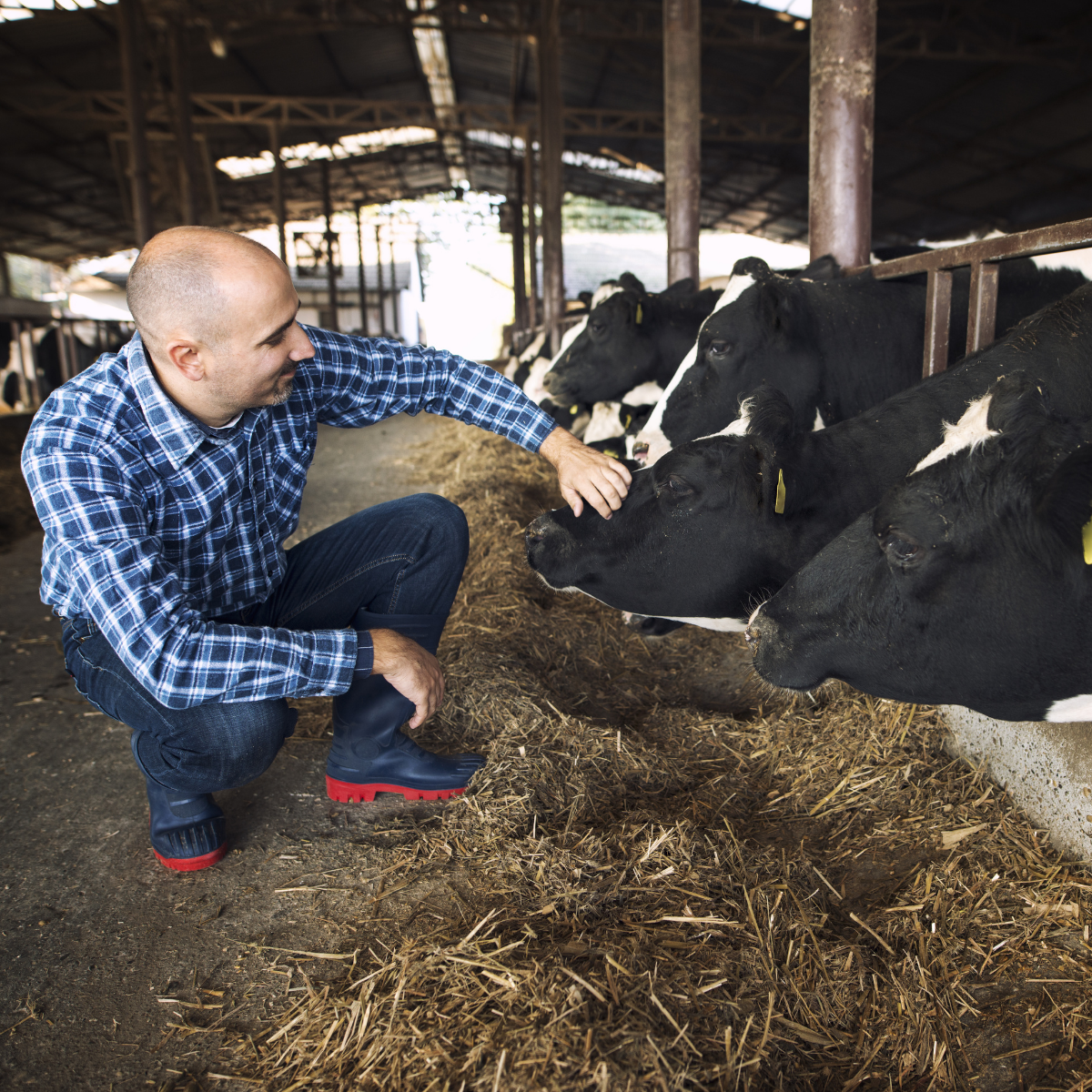Richard Shepardson, M.S. and Matthew Sellers, Ph.D
Recent Posts
MAXIMIZING MILK FAT WITH DE NOVO FATTY ACIDS
Posted by Richard Shepardson, M.S. and Matthew Sellers, Ph.D on Nov 12, 2020 11:09:15 AM
Maximizing milk fat is an important key to profitability on dairy farms. Milk fat is derived from two sources – de novo fatty acids (FA), which are synthesized directly in the mammary gland from short-chain FA, also known as volatile FA, and preformed FA that are transferred to the mammary gland directly from plasma and originate primarily from the diet. Recent research has shown that increasing de novo FA concentrations in milk is correlated with increases in overall milk fat concentration. There are many ways in which a farm can promote high de novo FA concentration in their herd including forage management, providing fresh and well-mixed feed, improving rumen health, and other nutrition and management strategies. Dairies looking to improve or maintain their bulk tank fat test should consider assessing and implementing this on farm.
Read MoreTopics: ANIMAL NUTRITION
HIGH PURITY FAT SUPPLEMENTS AND THEIR IMPACT ON DIGESTIBILITY
Posted by Richard Shepardson, M.S. and Matthew Sellers, Ph.D on Sep 13, 2020 4:30:00 PM
Commercial fat supplements for dairy cows containing varying ratios of palmitic (PA; C16:0), stearic (SA; C18:0), and oleic acids (OA; C18:1) are common in modern lactating dairy rations. Some commercial supplements contain a blend of multiple fatty acids (e.g. PA + OA, PA + SA), whereas other supplements may be highly enriched in just a single fatty acid (FA). The profile of a supplement largely impacts FA digestibility. Recent research reports that supplemental fats that are highly enriched (>90%) in either PA or SA have very low digestibility compared to supplements that are of moderate (~80-85%) or low enrichment (<60% of a particular FA). When choosing a supplemental fat feeding strategy, FA profile should be taken into account in order to maintain adequate digestibility and thereby maximize return on investment.
Read MoreTopics: ANIMAL NUTRITION
FAT FEEDING DURING HEAT STRESS: SUPPLEMENTAL FATS
Posted by Richard Shepardson, M.S. and Matthew Sellers, Ph.D on Jun 22, 2020 10:25:09 AM
FAT FEEDING DURING HEAT STRESS: EFFECTS OF SUPPLEMENTAL FAT
Fat is added to many dairy rations at all times of the year to increase energy density of the ration, improve milk and component production, and help with reproductive success. During times of heat stress, adding fat to a ration makes sense because it can help maintain energy in a diet without taking up much space.
Read MoreTopics: ANIMAL NUTRITION
INTRO TO FAT FEEDING DURING HEAT STRESS
Posted by Richard Shepardson, M.S. and Matthew Sellers, Ph.D on Jun 16, 2020 9:40:55 AM
Implementing strategic fat feeding on dairy farms can help mitigate some of the economic losses caused by heat stress.
The US dairy industry suffers significant economic losses due to the negative effects of heat stress on cattle every year. Heat stress decreases dry matter intake, leading to lower milk yield and increased risk for conditions such as lower body condition scores, rumen acidosis, and milk fat depression. Increasing ration contents of fermentable carbohydrates can exacerbate acidosis. Today, the best way to handle heat stress is through fat feeding.
Fat is a non-fermentable nutrient, and saturated fatty acids (FA) do not decrease dry matter intake, negatively impact rumen fermentation or contribute to altered biohydrogenation pathways. Feeding fat can increase nutrient density of the ration to improve energy consumption, especially when intake is lower during heat stress. Implementing strategic fat feeding on dairy farms can help mitigate some of the economic losses caused by heat stress.
Read MoreTopics: ANIMAL NUTRITION
STRATEGIES FOR IMPROVED REPRODUCTIVE PERFORMANCE IN EARLY LACTATION COWS
Posted by Richard Shepardson, M.S. and Matthew Sellers, Ph.D on Jun 4, 2020 7:00:00 AM
Minimize the days spent in negative energy balance as AN important strategy to improve peak milk and reproductive performance in cows during early lactation
The onset of lactation is accompanied by extreme physiological shifts for dairy cows and causes a gap between the biochemical energy necessary to support lactation and the dietary energy taken in through dry matter intake (DMI). If cows are not obtaining adequate nutrients through feed, they enter negative energy balance (NEBAL) and must utilize body reserves (i.e. adipose tissue) to make up the difference. Cows in NEBAL, and those that remain in NEBAL for extended periods of time, will decrease in body weight and condition which can lead to a variety of metabolic and reproductive issues. Minimizing the time spent in NEBAL improves peak milk and reproductive performance.
IMPROVING ENERGY BALANCE AND REPRODUCTIVE SUCCESS
Minimizing days spent in NEBAL is an important strategy to improve reproductive success. Effects of energy balance on reproductive performance have been well documented. Butler (2000) and Gumen et al. (2011) will be briefly reviewed for the purposes of this paper.
Energy balance can impact the ability of the cow to return to estrous and ability to carry a calf. Decreased reproductive success is also associated with increased plasma non-esterified fatty acids (NEFA) and beta-hydroxybutyrate (BHBA) concentrations present during NEBAL as the body mobilizes energy reserves. Negative energy balance alters luteinizing hormone (LH) pulse frequency and decreases ovarian sensitivity to LH. Circulating blood progesterone, often referred to as the “pregnancy hormone,” is decreased when cows are in NEBAL, meaning that these cows also have decreased fertility. Oocyte quality and function of the corpus luteum are also negatively impacted by prolonged NEBAL. Carvalho et al., (2014) demonstrated that pregnancies per artificial insemination (P/AI) at 40 days in milk for cows that lost, maintained, or gained body condition in the first 21 days of lactation was 25%, 38%, and 84%, respectively. These numbers were mirrored by the P/AI at 70 days as well.
Interestingly, energy corrected milk yield of all three groups was not different, nor was body condition score at calving. Finally, Domecq et al. (1997) showed that cows that lost 0.40 units of body condition decreased first service conception rate by 17%, and cows that lost 0.80 units of body condition decreased by 20%.
Read MoreIn order to improve reproductive success and peak milk yield, dairy managers and nutritionists must focus on returning their cows to positive energy balance (PEBAL) as quickly and efficiently as possible.
Topics: ANIMAL NUTRITION

